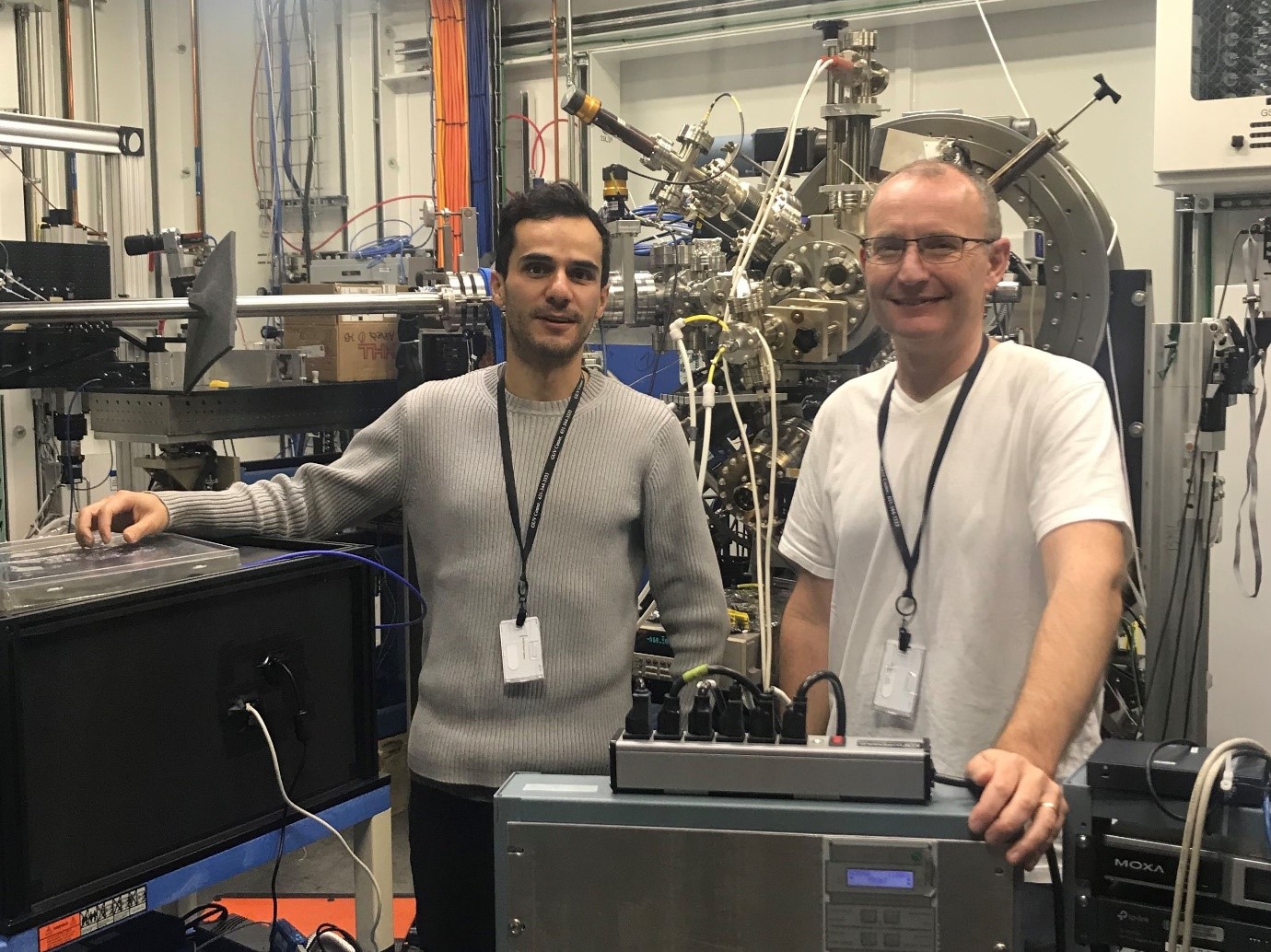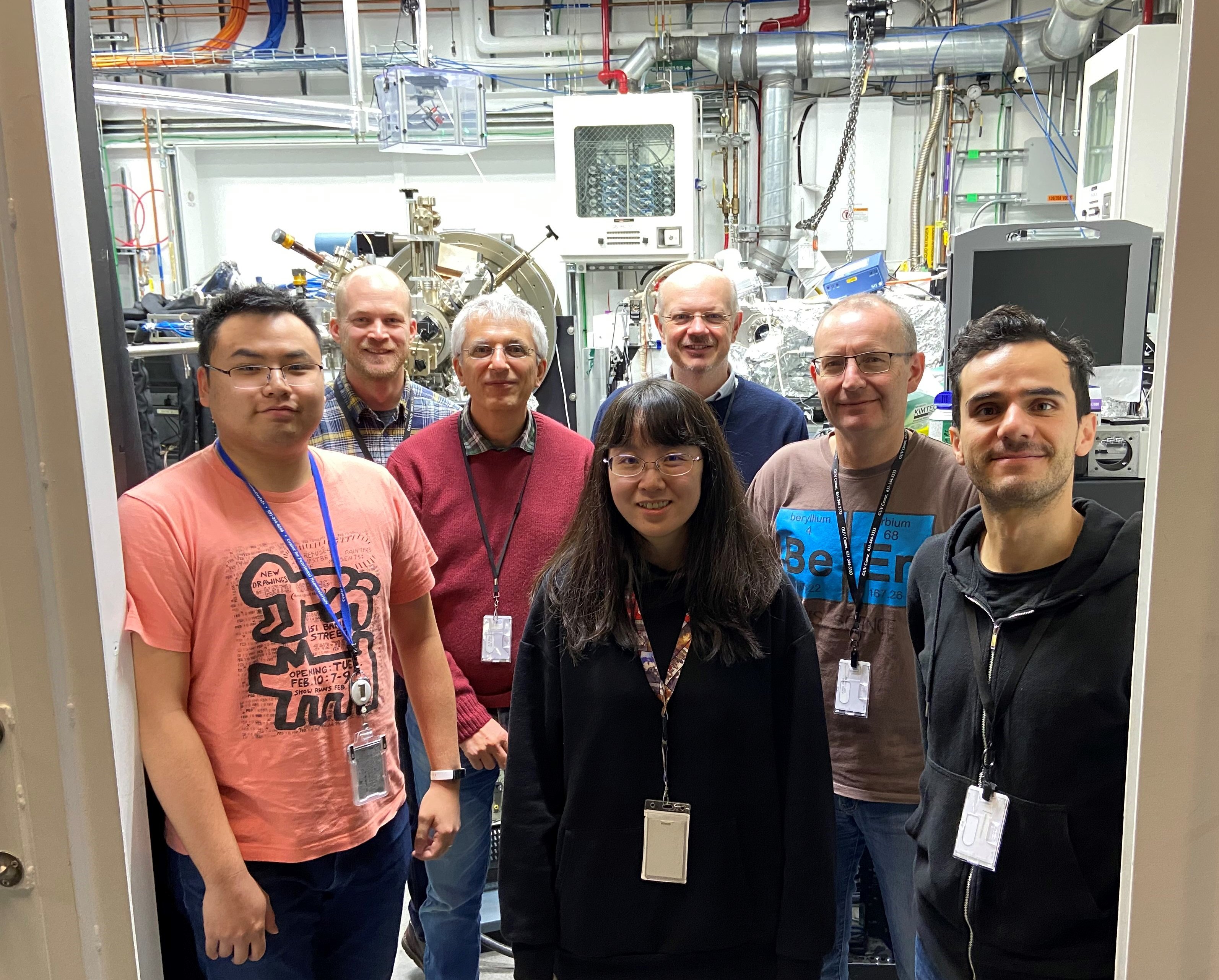Dr. Lee Jones (ASTeC) and Ph.D. student Pavel Juarez-Lopez (University of Liverpool) have recently returned from Brookhaven National Laboratory (BNL) following an intense but successful series of photocathode experiments. The experiments brought together a large team from across the USA and Europe, with the common purpose of utilising X-rays generated by the NSLS-II 3rd generation synchrotron light source at the BNL. The aim was to study the process of photocathode deposition onto a number of different substrate surfaces using the high quality X-ray beam on end station 4-ID ISR, utilising the techniques of X-ray reflection (XRR) to study film thickness, X-ray diffraction (XRD) to study stoichiometry, and X-ray florescence (XRF) to study composition.
The unique combination of the mature and flexible photocathode deposition vacuum system developed over many years at BNL with this range of online characterisation techniques has allowed XRR, XRD and XRF to be carried out before, during and after photocathode growth, and most critically has allowed the in-operando[1] monitoring of the photocathode film during deposition.
The ultimate goal is to grow photocathode electron sources which provide the highest levels of efficiency and electron beam brightness during operation, and one way to achieve this is to control the growth of the photoemitting layer to minimise surface roughness and maximise crystal grain size, ideally 'growing' a single-crystal. The in-operando approach is central to achieving this goal.
This is the latest series of experiments in a long-running photocathode R&D programme which has involved use of the first NSLS at Brookhaven, the CHESS facility at Cornell, and more recently the NSLS-II at BNL. The focus during this run has been the deposition of caesium, antimony and tellurium to create Cs-Sb and Cs-Te alkali-metal photocathodes on silicon, silicon carbide and silver etalon substrates, with both sequential and co-deposition approaches tested in the experiments.
The team (record-breaking in terms of its size) for this experimental run involved expertise from many facilities worldwide:
- Dr. Anna Alexander Los Alamos National Laboratory
- Dr. Alessandro di Bona INFN & University of Moderna
- Dr. Jiajie Cen Brookhaven National Laboratory
- Dr. Oksana Chubenko Arizona State University
- William DeBenedetti Cornell University
- Alice Galdi Cornell University
- Dr. Mengjia Gaowei Brookhaven National Laboratory
- Dr. Lee Jones STFC Daresbury Laboratory & Cockcroft Institute
- Pavel Juarez-Lopez University of Liverpool & Cockcroft Institute
- Dr. Fangze Liu Los Alamos National Laboratory
- Dr. Sonal Mistry Helmholtz-Zentrum Berlin
- Dr. Vitaly Pavlenko Los Alamos National Laboratory
- Pallavi Saha Arizona State University
- Dr. Daniele Sertore INFN Milan
- Dr. John Smedley Los Alamos National Laboratory (Programme Leader)
- Dr. Derek Strom Max Planck Institute, Munich
This was the first time Lee has been involved with this collaboration, and the second time for Pavel who plans to include some of the work and data in his Ph.D. thesis. Each deposition experiment is both long and complex, and Lee and Pavel have gained much knowledge and experience through involvement with this work. Lee hopes to join another experimental run later in 2020 with a substrate sample of his own to carry out a caesium telluride photocathode deposition which directly support ASTeC's R&D programme and complement the CLARA project.

Picture 1 – Lee and Pavel in the experimental end station on beamline 4-ID ISR at the Brookhaven National Laboratory, Long Island, New York.

Picture 2 – Part of the international team. Left-to-right: Jiajie Cen, Derek Strom,
Alessandro di Bona, Mengjia Gaowei, Danielle Sertore, Lee Jones, Pavel Juarez-Lopez.
[1] Operando spectroscopy is an analytical methodology wherein the characterisation of materials undergoing reaction is coupled simultaneously with measurement, in this case applying XRF, XRR and XRD during photocathode deposition to study evolution of the photocathode chemistry as it happens.
